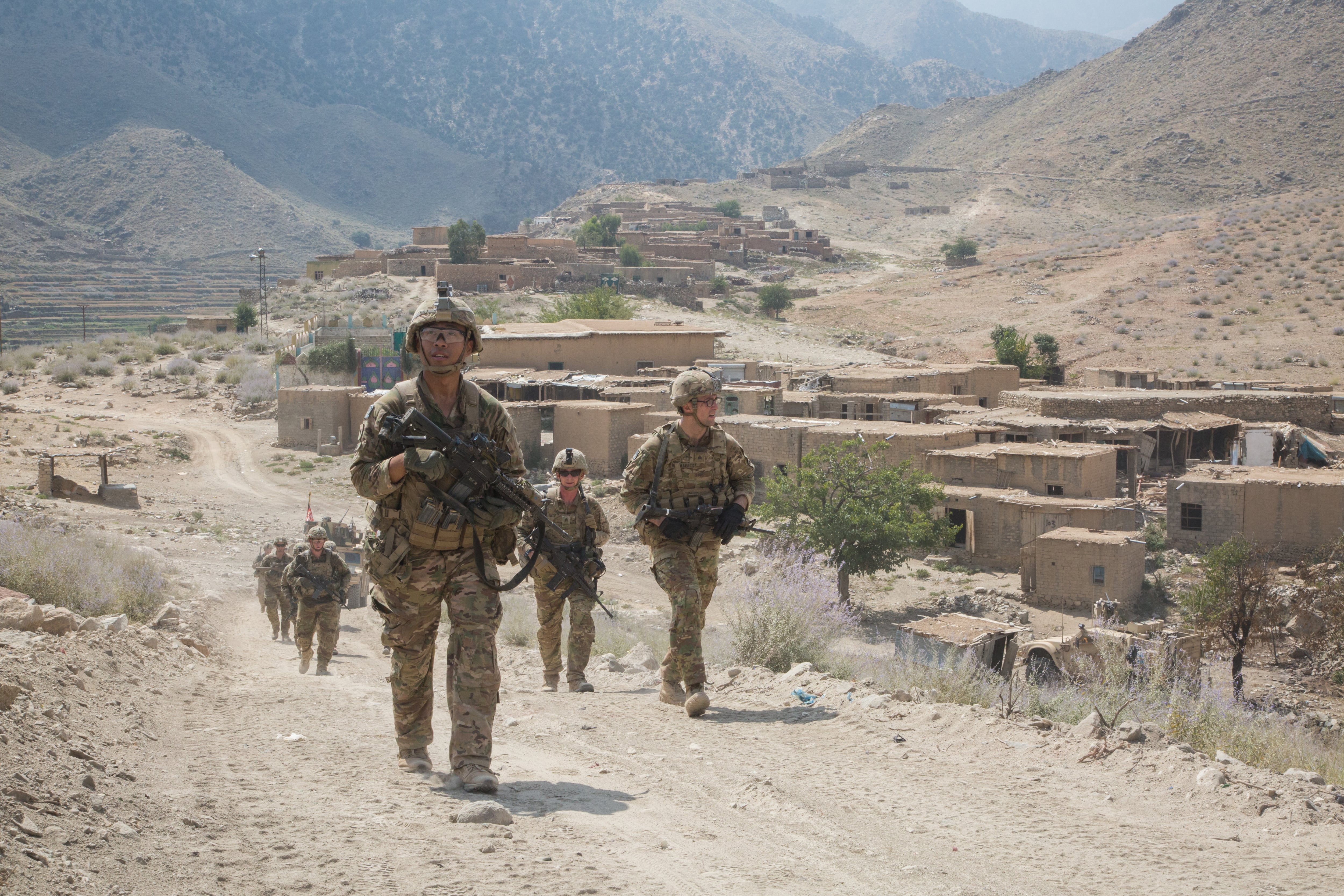The “first line of defense” in what follows any potential peace deal in Afghanistan isn’t likely to be grunts on patrol but soldiers who monitor the billions of dollars spent on projects aimed at holding the war-torn country together.
But a near blackout of information on the effectiveness of U.S. programs in Afghanistan is threatening to increase waste, fraud, abuse and malfeasance on projects intended to help the country when U.S. troops ultimately leave, John Sokpo, special inspector general for Afghanistan reconstruction, told members of the House Oversight and Reform Committee on Tuesday.
“Can the Afghan military fight? Well, you don’t know because they took away all of the metrics for success,” Sopko said. “And we don’t know.”
RELATED

Sopko cautioned that without critical planning and oversight, any progress post-peace deal would be unlikely. As the number of troops are reduced, so is the number of people who oversee programs.
“Otherwise you might as well pile up all the dollars and euros in Massoud Circle in downtown Kabul and burn them for all the good they’ll do,” Sopko said.
Official estimates show that since 2002 the United States has spent $780 billion on combat operations and $137 billion on reconstruction efforts. More than 2,400 U.S. troops have died in the conflict, and at least 20,000 have been wounded.
Current troop levels hover at an estimated 13,000, down from about 100,000 at the height of the 18-year war. But as those troops and assets decrease, the programs put in place to rebuild Afghanistan are in jeopardy without sufficient oversight.
“The first line of defense is that soldier who’s monitoring the contract or monitoring the Afghan government,” Sopko said. “If further troop reductions happen, who’s going to come back?“Are they gun toters or are they monitoring?”
He continued, “If [monitors] come back in the first tranche, who’s going to protect your money?”
Bombing missions reached a near-decade high last year. A recent U.S. Air Forces Central Command report showed that U.S. aircraft dropped 7,423 munitions in the country in 2019. Comparatively, when U.S. troops were at their peak in 2010 and 2011, the U.S. dropped 5,100 and 5,411 bombs respectively.
While bombing may be up, it appears troop numbers and assets supporting those troops continue to decline.
A December 2019 Pentagon report titled “Enhancing Security and Stability of Afghanistan” showed plans to cut UH-60 Black Hawk helicopters for Afghan forces from 159 to 53 and the AC-208 attack and reconnaissance aircraft from 32 to 10.
Despite repeated invitations, neither the Department of Defense nor the State Department sent representatives to update Congress on Trump’s Afghanistan plan, which drew bipartisan ire from committee members.
“If you didn’t exist, we would have nobody at this hearing today to give us any answers,” Rep. Thomas Massie, R-Kentucky told Sopko.
In response, the inspector general pushed Congress to get the answers they need to do their oversight jobs.
“You’ve got to force the administration to be honest,” Sopko said. “The administration has to come in and tell you, why are you spending this money, what do you expect to accomplish at the end?”
But it’s become increasingly difficult for both Congress and the U.S. public to know what is happening with the billions spent in Afghanistan as information is increasingly limited by Trump officials.
The Washington Post’s “Afghanistan Papers” project, released late last year, highlighted many instances in which officials misled Congress and the public with rosy pictures of progress in the 18-year war.
Sopko stopped short of pointing to specific people in current or previous administrations outright lying, instead noting that exaggerated claims of progress had become part of the culture of dealing with challenges in Afghanistan years ago.
“That’s the real dishonesty, we have been dishonest to ourselves,” Sopko said. “A number of people have come here and tried to tell the good story. We also have this hubris that we can turn Afghanistan into a little America or another Norway. We can’t.”
Sopko ticked off a list of waste that’s been uncovered, from $9 billion spent on counter-narcotics that had no real effect on the drug trade, $500 million spent on airplanes that can’t fly and millions more spent on buildings that melted in the Afghan sun.
“Every commander I’ve met, I’ve met six of them. Every one of them has said, ‘the summer fighting season, we won,” Sopko said. “If we won, what does defeat look like?”
House members probed Sopko for reasons why there have been changes in classifying previously public measures of progress in Afghanistan under President Donald Trump’s administration and the shift away from Taliban versus Afghan government controlled territories.
“I can’t give you an answer because there was never a real good explanation to us why district and population control was no longer relevant,” Sopko said.
He called the changes indicative of a larger problem, wherein every metric that Congress would find useful for evaluating successes or failures in Afghanistan is now “either classified or not being monitored anymore.”
Todd South has written about crime, courts, government and the military for multiple publications since 2004 and was named a 2014 Pulitzer finalist for a co-written project on witness intimidation. Todd is a Marine veteran of the Iraq War.





